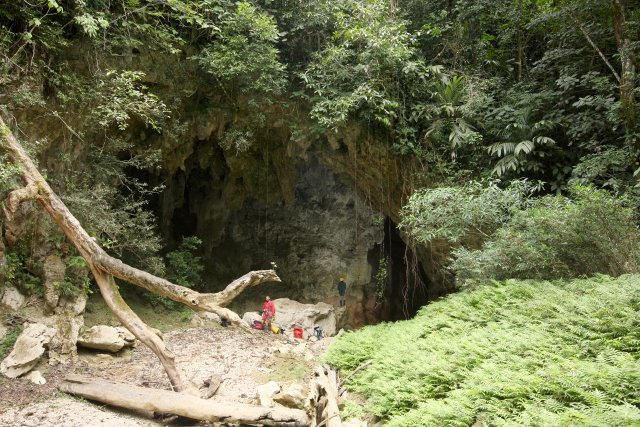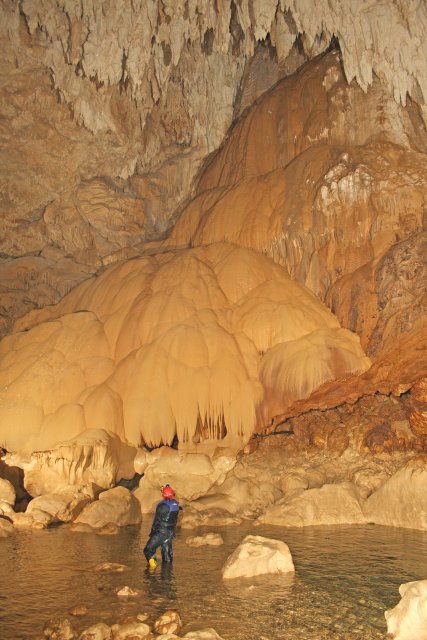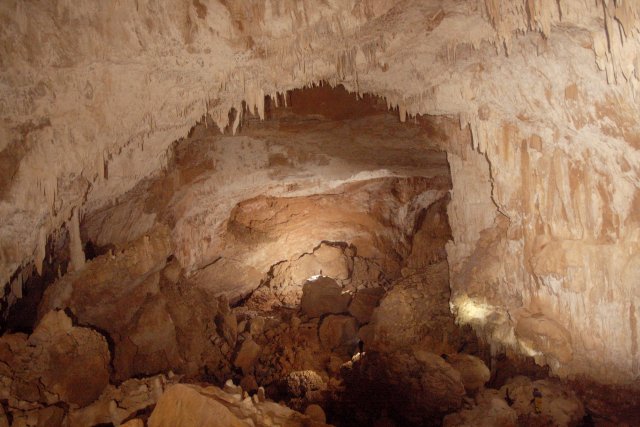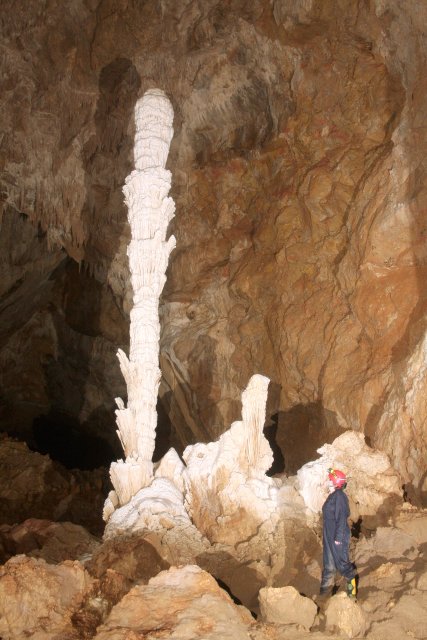Cave Name: Pueblo Creek Cave
Alternate Names: Flush Cave
District: Toledo
Area: Pueblo Viejo
Location: Co-ordinates logged with the Belize Institute of Archaeology
Altitude: 213m
Length: 4733m (>7000m including Ochochpec)
Depth: -115m
History of exploration:
Although known to the locals for some time, the first systematic exploration of this cave was undertaken in 1982 by Logan McNatt and Tom Miller, when it was referred to as ‘Flush Cave’. At the time exploration only reached the first chamber and a high level entrance series used as an escape route in an unexpected flash flood.
In 2006 SWCC were directed to the cave by the Institute of Archaeology, in order to check some of the work being undertaken by Trekforce. The cave was pushed down through large river passage to an impassable log jam caused by previous high flood levels.
In 2008 SWCC continued exploration further into the cave and discovered the massive Lobster Chamber. The cave continued through more river passage with a number of unexplored leads.
In 2010 SWCC continued exploration. Following the current limit of exploration, the cave was extended for approx. 1 km. The downstream continuation of the cave was pushed to a final sump pool of 60m x 30m in diameter. A number of smaller inlets were also explored and surveyed.
Following a line survey of the Ochochpec cave in the Aguacate area, which ends at a similar sized sump pool, the straight line distance between the caves, is approximately 390m. As hypothesized by Tom Miller previously it is almost certain that these two caves are hydrological linked, although a dry route between them remains elusive.
Description:

Following the main river entrance a small pool is negotiated before a large collapsed jungle entrance is encountered. The best route is to climb up towards this entrance and then cross over about half way along before heading back down into the main passage. The passage continues until reaching a slippery climb down into a pool of water perched about the 15m pitch into the main cave. Ropes are required to enter the main cave, however a 10m climb up on the right leads to a high level series. The passage here is an old fossil series that leads back to a junction, right leading back to the 2nd collapse entrance and left and down leads back into the main cave, beneath the pitch.

From the pitch a large chamber leads over a large amount of flood debris to a large pool, filled with organic debris. The shallowest point is straight through the middle. The cave continues through large stream passage, before a series of swims are encountered. A 5m climb, requiring a rope or ladder marks the start of the swims. The section of swimming takes approx. 45 minutes and it is required to constantly climb in and out of the water. On previous years, log jams have caused parts of this section to require a climb up followed by abseils back down.
Eventually the enormous Lobster Chamber is reached. A small ‘beach’ marks the start of the Chamber. The most obvious route is to stay low on the right hand side and follow the sound of water. It may take around 15 minutes to navigate across the chamber.
At the end of the chamber a number of deep flooded pot holes mark the start of another section of swimming and wading, following an impressive piece of river passage. After another 30 minutes an inlet enters from the left hand side.
2010 discoveries
This inlet leads back for about 0.5km through some clean stream passage, before splitting into two passages, but both lowering to low airspace canals before sumping.
Carrying on in the main river a short 7m climb leads another 70m of stream way before first sump pool is reached. There are 3 possible routes around the sump but navigation can be difficult.
The best route is on the left hand side. However soon after rejoining the main passage a large 30m x 60m sump pool is reached. A route behind is a dry oxbow leading back, past some fine formations including the “Pagoda”, to the main passage.
Cultural:
Details on archaeology and cultural remains are available from the IA.
Survey:
Pueblo Creek Cave (2010)
Links:
References:
SWCC Belize Report. (2006, 2008, 2010).
McNatt, L. (1982). Grim Fairy Tales. Texas Caver 27(4): 67-69. Account of flash flood during Miller and McNatt’s initial exploration of Flush Cave (Pueblo Creek Cave).
Miller, T. (2008). Personal communication, email describing the initial exploration of 'Flush Cave’, Pueblo Viejo.

